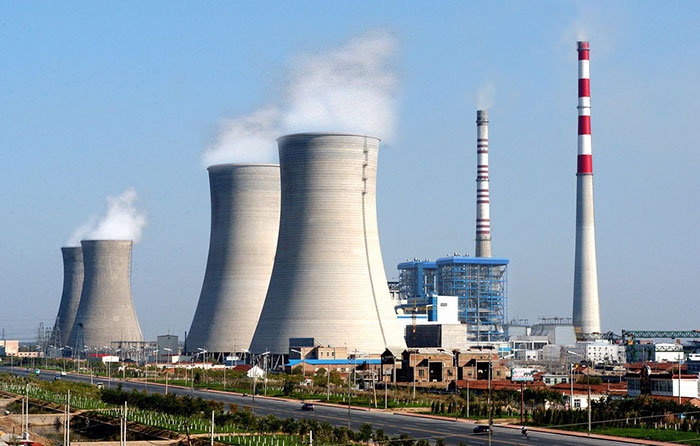Some knowledge points about titanium steel composite plate
1. What is titanium steel composite plate?
Titanium is a rare metal. Because it is dispersed and difficult to extract in nature, its stock is relatively abundant, ranking tenth among all elements. Titanium is widely used as a variety of chemical reaction containers and heat exchanger materials due to its excellent corrosion resistance, but the disadvantage is that the cost is high. This problem is particularly prominent when used as a structural component.
Titanium steel composite plate first appeared in Japan in 1962. The composite material of titanium and ordinary steel is called titanium steel composite material. It has both the corrosion resistance of titanium and the strength of ordinary steel plate as a structure, and its cost has been greatly reduced.
Thicker titanium steel composite plates are mainly used for corrosion-resistant structural materials, such as chemical equipment and condenser tube plates used in power generation equipment. Thinner titanium steel composite plates are mainly used in the lining of marine steel structures. In recent years, they have also been widely used in chimney inner tubes as anti-corrosion materials.
2. How to make titanium steel composite plates?
Generally, the manufacturing methods of composite steel plates are: explosive composite method, thick plate rolling method and continuous hot rolling method. The explosive composite method is usually carried out at room temperature, and the rolling and pressing method is to assemble and heat the plates.
Explosive composite method: First, keep a certain distance between the two metal plates to be pressed, and then put an appropriate amount of explosives on them. The explosive is detonated from one end, and the explosion speed is several thousand meters per second. With the explosive energy, the titanium plate collides from the angle of the substrate steel plate. At this collision point, the substrate steel plate and the titanium plate show fluid behavior due to the very large deformation speed and ultra-high pressure. The oxide film and gas adsorption layer on the surface of the two metals are eliminated as metal jets, and the clean surface-to-surface bonding is completed in an instant, which is called cold bonding.

The titanium-steel composite plate manufactured by this method can continue to be hot-rolled to a plate thickness of 4mm, so it is also called the explosive composite method.
Thick plate rolling method: Initially, the titanium plate (composite material) and the steel plate (substrate) are assembled with embedded slabs. At this time, a suitable intermediate embedded material is placed between the titanium plate and the steel, and then electron beam welding is used under high vacuum. Finally, after being heated in a heating furnace, the plate is rolled to the required thickness on a thick plate rolling mill, so that the titanium plate and the steel plate are truly joined. Finally, the outer periphery is cut and separated into two plates.
Additional resources:How Does Titanium Anode Transform Textile Wastewater?
Maximize Solar Efficiency: The Power of MMO Coated Titanium Anodes
How Do MMO Coated Anodes Transform Emissions Control?
How Do MMO Coated Titanium Anodes Enhance Hydrometallurgy?
Are Platinized Titanium Anodes Worth the Investment for Marine Use?
Maximize Efficiency: Platinized Titanium Anodes in Oil & Gas
Benefits of MMO Titanium Anode in Manganese Electrowinning Process
Continuous hot rolling method: The continuous hot rolling method is basically the same as the thick plate rolling method. The difference is that a steel plate is added between the two plates, arc welding is performed in the atmosphere, and finally the plates are continuously rolled to the required thickness on a continuous hot rolling mill and taken out in the form of a coil. Finally, the outer periphery is cut and separated into two plates.
3. Common problems
The common quality problems of titanium steel plate are: composite plate defects and welding defects. The former are mainly insufficient bonding rate, local surface cracks of the titanium layer and the steel layer, etc.; the latter are mainly pores, cracks, incomplete penetration, and slag inclusions.
The following should be noted when welding titanium plates:
(1) Use argon gas with a purity of not less than 99.99% as the shielding gas. In addition, the welding wire is not allowed to have cracks or inter layers.
(2) Carefully clean and treat the welding area of the work piece before welding. When the ambient temperature is below 5°C, flames should be used to preheat the base steel surface.
(3) For titanium-steel composite plate equipment, the titanium weld processing technology is strip processing, that is, the titanium layer within 15mm of the edge of the composite plate is removed, the steel weld is welded first, and then the steel weld is completely covered with a 50mm wide titanium plate strip to weld the titanium layer, while argon gas protection.
(4) For micro-cracks on the surface of the composite plate, the defects must be cleaned before repair welding. For small cracks, direct repair welding can be used.
(5) For non-fitting found during the production and inspection process, if the area is large, the material must be replaced. If the area is small, remediation can be used, and the non-bonding area is reinforced with titanium rivets. The number of rivets is preferably small.
What Are MMO Coated Titanium Anodes for Metal Surface Treatment?
How Can MMO Coated Titanium Anodes Enhance Vaccine Production Efficiency?
Maximizing Sewer System Efficiency with MMO Coated Anodes

